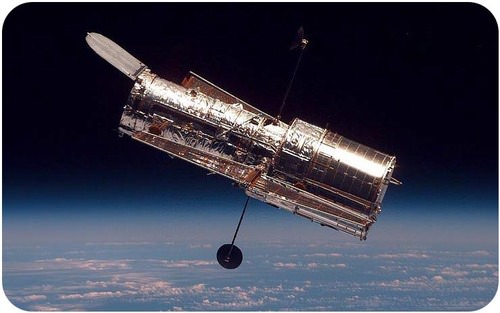Introduction
Earth science is made of many branches of knowledge concerning all aspects of the Earth system. The main branches are geology, meteorology, climatology, oceanography, and environmental science. Astronomy uses principles understood from Earth to learn about the solar system, galaxy, and universe.
Overview of Earth Science
Only recently have humans begun to understand the complexity of our planet Earth. We have only known for a few hundred years that Earth is just a tiny part of an enormous galaxy, which in turn is a tiny part of an even greater universe.
Earth science deals with any and all aspects of the Earth: its lands, interior, atmosphere, and oceans. In all its wonder, Earth scientists seek to understand the beautiful sphere on which we live, shown in Figure below.

Earth as seen from Apollo 17.
Earth is a very large, complex system or set of systems, so most Earth scientists specialize in studying one aspect of the planet. Since all of the branches of Earth science are connected, these researchers work together to answer complicated questions. The major branches of Earth science are described below.
Geology
Geology is the study of the Earth’s solid material and structures and the processes that create them. Some ideas geologists might consider include how rocks and landforms are created or the composition of rocks, minerals, or various landforms. Geologists consider how natural processes create and destroy materials on Earth, and how humans can use Earth materials as resources, among other topics.
Geology has many branches, only a few of which are described in Figure below. As you learn about each branch of geology, think of an interesting question that you might like to try to answer.

(a) Mineralogists study the composition and structure of minerals and may look for valuable minerals.
(b) Planetary geologists study the geology of other planets. Lunar geologists study the Moon.
(c) Seismologists study earthquakes and the geologic processes that create them. They monitor earthquakes worldwide to protect people and property.
(d) Scientists interested in fossils are paleontologists.
Oceanography
The study of water and its movements, distribution and quality is hydrology. Oceanography is more than just the hydrology of the oceans. Oceanography is the study of everything in the ocean environment, which covers about 70% of the Earth’s surface (Figure below). Recent technology has allowed people and probes to venture to the deepest parts of the ocean, but still much of the ocean remains unexplored.

Physical oceanographers study the movements of ocean water such as currents, waves, and tides.
Marine geologists learn about the rocks and geologic processes of the ocean basins. An animation of underwater high-resolution sonar can be found here: http://oceanexplorer.noaa.gov/explorations/02fire/logs/jul06/media/abefly.html. Marine biologists study life in the oceans.
Climatology and Meteorology
Meteorology includes the study of weather patterns, clouds, hurricanes, and tornadoes. Using modern technology such as radars and satellites, meteorologists are getting more accurate at forecasting the weather all the time (Figure below).

Meteorologists forecast major storms to save lives and property.
Climatologists study the whole atmosphere, taking a long-range view. Climatologists can help us better understand how and why climate changes (Figure below).

Carbon dioxide released into the atmosphere is causing the global climate to change.
Environmental Science
Environmental scientists study the effects people have on their environment, including the landscape, atmosphere, water, and living things (Figure below).

Every action people take has some effect on Earth's environment.
Astronomy
Astronomers are interested in outer space and the physical bodies beyond the Earth. They use telescopes to see things far beyond what the human eye can see. Astronomers help to design spacecraft that travel into space and send back information about faraway places or satellites (Figure below).

The Hubble Space Telescope.
Lesson Summary
The study of Earth science includes many different fields, including geology, meteorology, oceanography, and astronomy.
Each type of Earth scientist investigates the processes and materials of the Earth and beyond as a system.

No comments:
Post a Comment